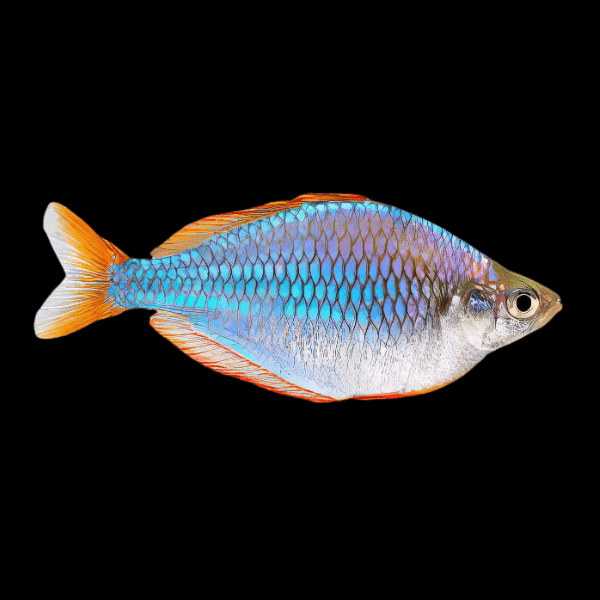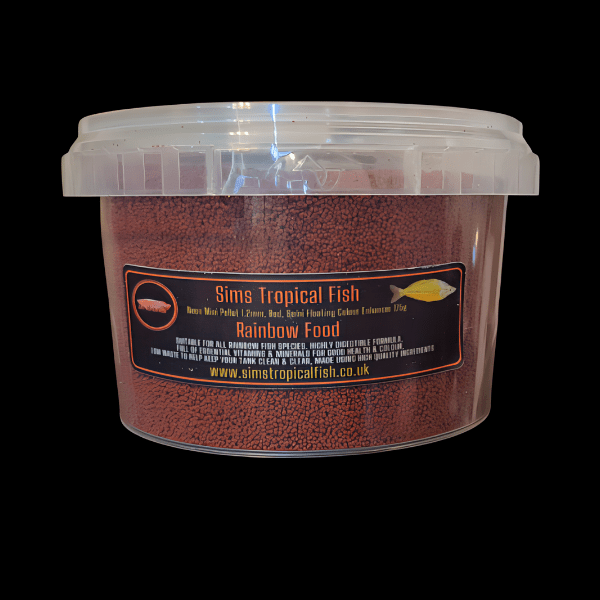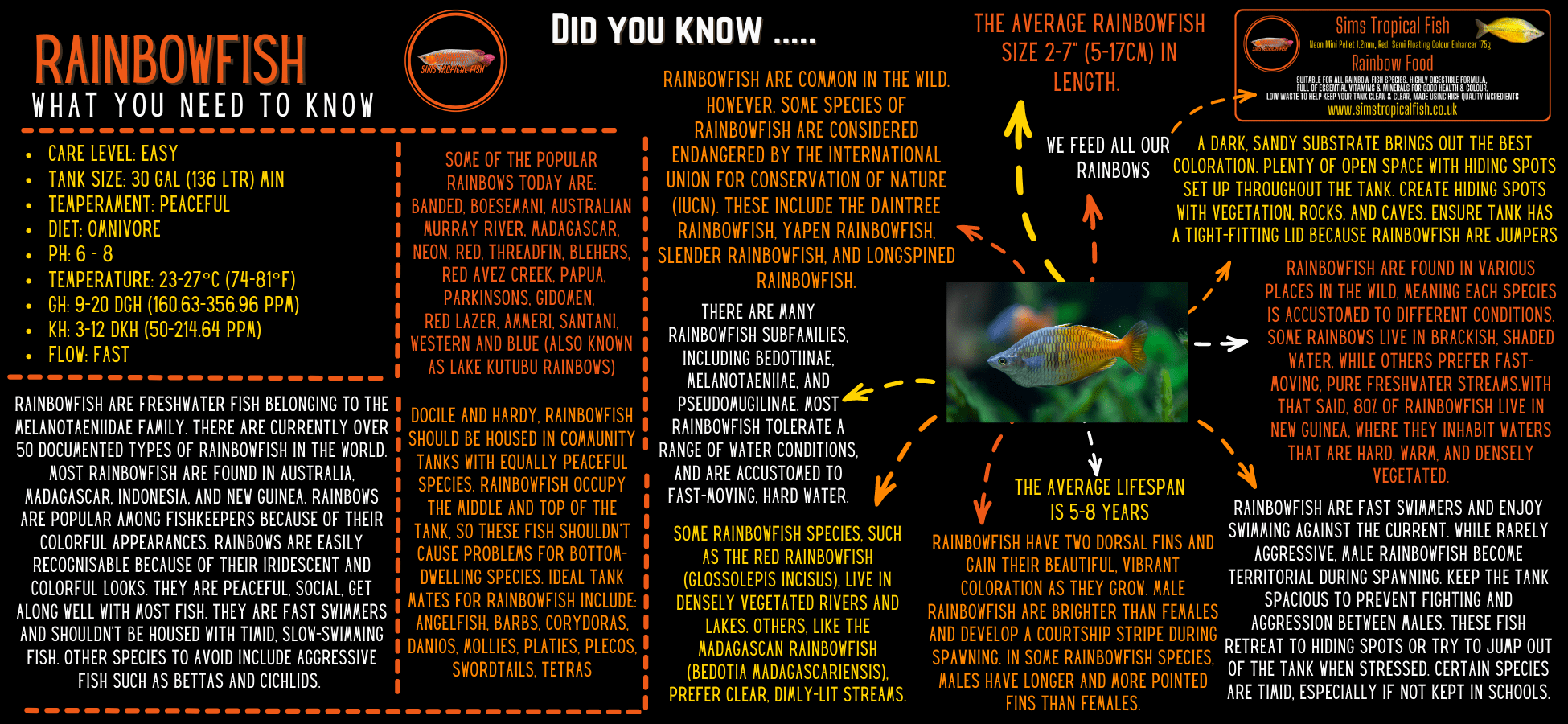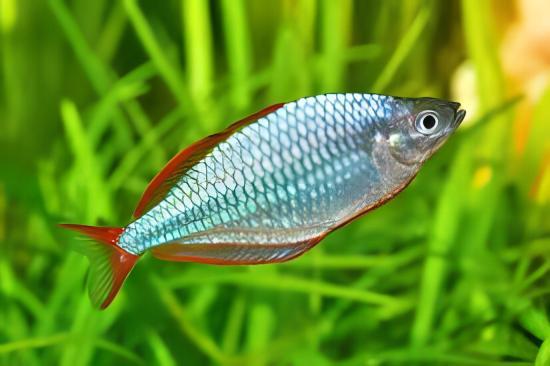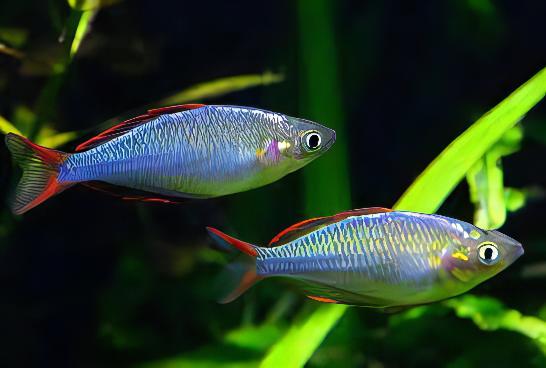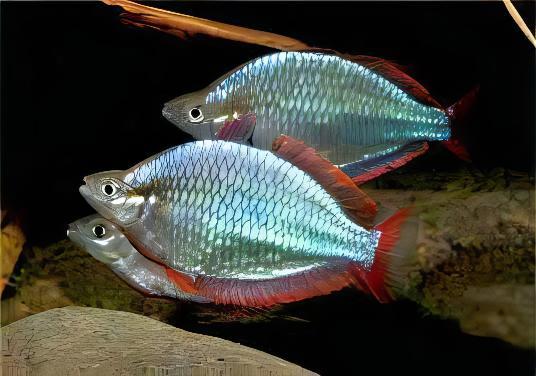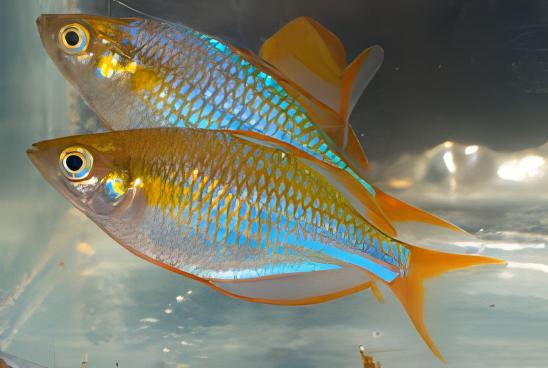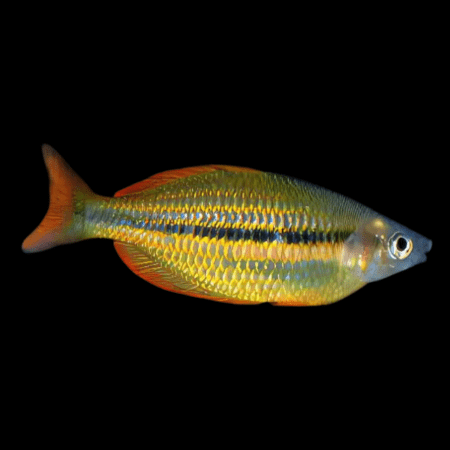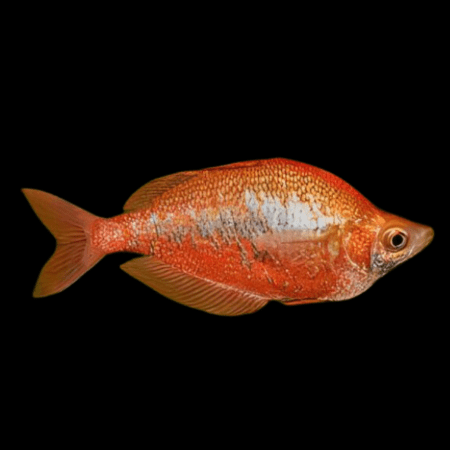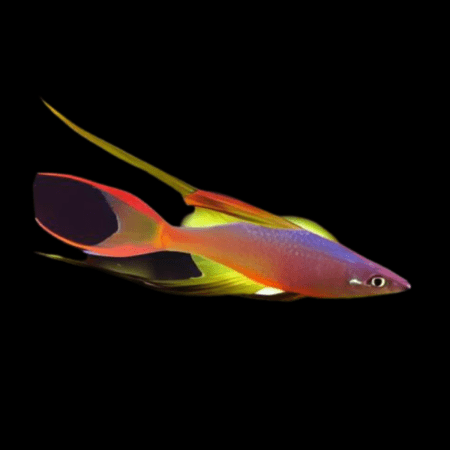Description
Neon Blue Rainbow Fish Melanotaenia Praecox
Synonyms: Rhombatractus praecox
Distribution: Middle reaches of the Mamberamo River in northern Irian Jaya.
Maximum Size: 6cm (2.4″)
Temperature: 22-28°C
Water Parameters: Undemanding. pH: 6.0-8.0, dH: up to 15 degrees.
Compatibility: Community
Lighting: No special requirements
Sexual Dimorphism: Males more colourful with redder finnage, also becoming deeper bodied with age. Females with orange-yellow finnage trimmed with silver.
Feeding: Flake, granules and frozen foods
Description
Care
A large shoal of iridescent Neon Rainbowfish gracing a planted community aquarium creates a wonderful, eye-catching display. Best maintained in groups of at least 6 specimens, they will add activity and colour to the top and middle levels of the tank. The aquarium itself should be 3ft in length, or longer. The sides and back should be aquascaped with plants and bogwood to create a network of hiding places which the fish will enjoy exploring, leaving a large open swimming space in the central portion. Floating plant species can be used to help diffuse bright lighting. Perfectly peaceful with other species and will not eat plants; an ideal community aquarium candidate! Do not keep with large boisterous species. May also be seen on sale as Neon Dwarf Rainbowfish or Praecox Rainbowfish.
Feeding
Enthusiastic eaters – be careful not to overfeed. Flake, micropellets, small frozen foods such as mosquito larvae, daphnia, brineshrimp etc.
Breeding
A separate good-sized breeding aquarium should be set up with a substrate of marbles. A small air-driven sponge filter (with a mature sponge) should be added to give gentle circulation and filtration. The temperature should be set at 26 °C. A conditioned group (3 females, 2 males) should then be acclimatised across to the breeding aquarium, which should be furnished with plenty of fine-leaved plants/Java moss clumps. After a time, a male will swim in front of a female, displaying to her. He will then begin to drive the female over the plants, utilising the whole length of the tank. The eggs will be scattered over the plants a few at a time. These fish are known as ‘continual spawners’ which means that the spawning activity takes place over several days/weeks, even months in some cases. This can present problems to the aquarist in that some adult fish may begin to consume the eggs as they are scattered, although this may not be a problem if the adults are kept well fed. However, many fishkeepers have found the eggs to be remarkably tough and have had great success in siphoning them out into another aquarium (containing matching water from the spawning tank) or else using spawning mops, which, when having caught a number of the eggs, can be moved to a separate tank (again with matching water) and replaced with a new mop, as and when each series of eggs are deposited. The eggs will usually hatch in 7-9 days (dependent on temperature) and once free-swimming, the tiny fry can be offered infusoria, moving onto larger foodstuffs as they develop.
